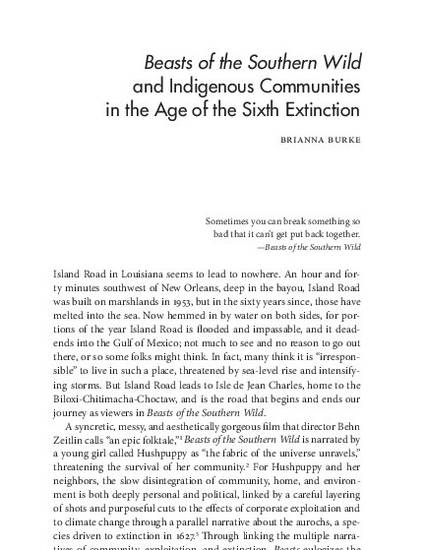
Island Road in Louisiana seems to lead to nowhere. An hour and forty minutes southwest of New Orleans, deep in the bayou, Island Road was built on marshlands in 1953, but in the sixty years since, those have melted into the sea. Now hemmed in by water on both sides, for portions of the year Island Road is flooded and impassable, and it dead- ends into the Gulf of Mexico; not much to see and no reason to go out there, or so some folks might think. In fact, many think it is “irresponsible” to live in such a place, threatened by sea- level rise and intensifying storms. But Island Road leads to Isle de Jean Charles, home to the Biloxi- Chitimacha- Choctaw, and is the road that begins and ends our journey as viewers in Beasts of the Southern Wild.
Available at: http://works.bepress.com/brianna_burke/8/

This article is published as Burke,B. Beasts of the Southern Wild and Indigenous Communities in the Age of the Sixth Extinction. (Winter 2019); Resilience: A Journal of the Environmental Humanities. 6(1); 61-85. DOI: 10.5250/resilience.6.1.0061. Posted with permission.
Additional Links: https://muse.jhu.edu/article/713665.
http://unp-bookworm.unl.edu/catalog/CategoryInfo.aspx?cid=163.